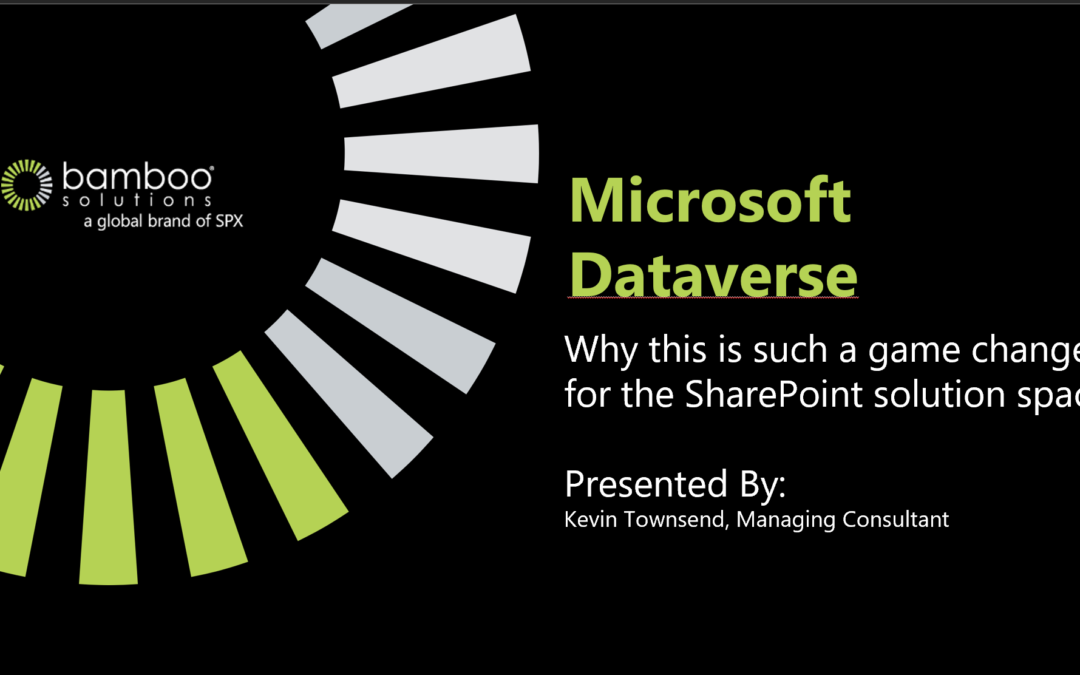What is Microsoft Dataverse?
What is Microsoft Dataverse? Simply put, it’s the new name for the Common Data Service.
Microsoft developed a citizen developer-friendly data store (based on AzureSQL) that already had a predefined set of common data objects like contacts, accounts, activities, etc. The predefined schema became the Common Data Model, and accessing databases based on the CDM became known as the Common Data Service. Citizen developers could utilize the existing data objects, extend these with custom fields, and also create custom entities.
SharePoint is a great system for managing unstructured data like documents and Adhoc lists but building relational data in other apps like Access or SQL required expertise not usually readily available.
Microsoft Dataverse from a quick glance could appear to be just another database technology, like SQL or Access. Like a database, it has tables, columns, rows, and relationships, but it’s much, much more than that.
It’s a Business Application Layer on top of SQL-like data.
SharePoint is a great system for managing unstructured data like documents and Adhoc lists. However, falls a bit flat when trying to store related, object-based data. MS-Access is also accessible but is based on older desktop-based technology and doesn’t have a strong security model. SQL databases (including AzureSQL) provide the ability to store relational data in a robust secure data platform. The issue is that building a SQL database requires some deep technical skills.
Why would we use the Microsoft Dataverse?
- Work with Any type of data
- Work with Any type of App
- Analytics and Reporting
- Security
- Compliance
- Availability and Scalability
- Backups
- Datacenter Regions
Dataverse lets you securely store and manage data that are used by business applications. Data within Dataverse is stored within a set of tables. A table is a set of rows (formerly referred to as records) and columns (formerly referred to as fields/attributes). Each column in the table is designed to store a certain type of data, for example, name, age, salary, and so on.
Dataverse includes a base set of standard tables that cover typical scenarios, but you can also create custom tables specific to your organization and populate them with data by using Power Query. App makers can then use Power Apps to build rich applications that use this data.
In Summary
The Microsoft Dataverse provides a low-code option to building applications in a deeply integrated environment (Office 365) and with capabilities and functionality that closely resemble a real database solution. Powerful management tools and relationships between your data, make the Dataverse a candidate for designing and even re-approaching older SharePoint-based solutions as an application that works everywhere. Check out the webinar we recently presented above for more information and as always, if you have any questions. please reach out to us.


